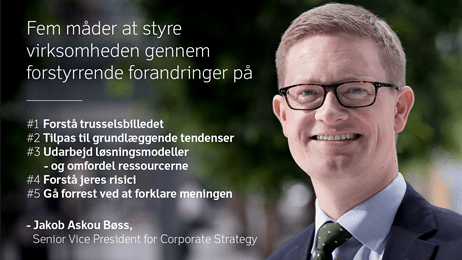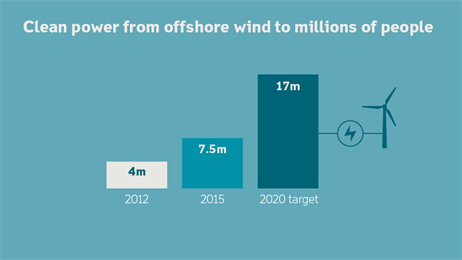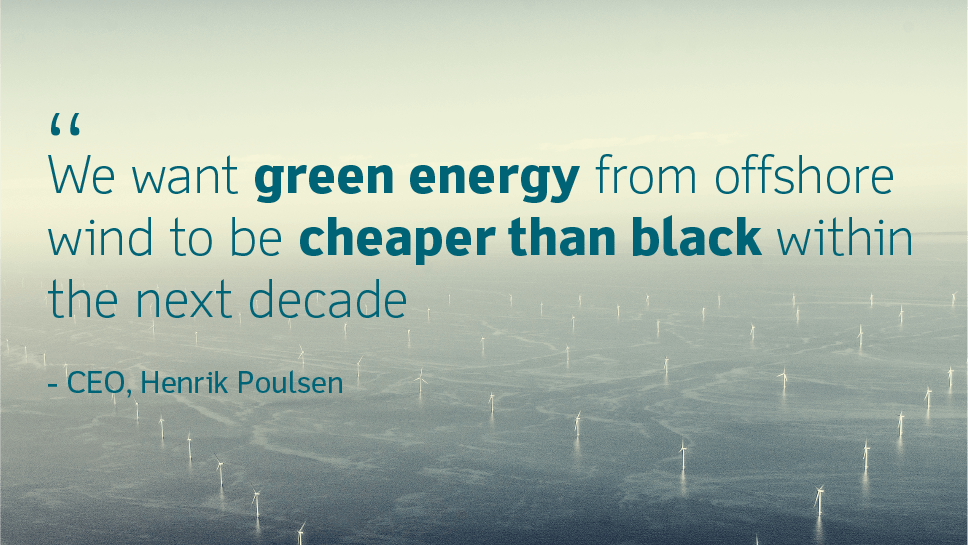
Five ways to navigate disruptive industrial change



Map and understand the disruptive forces that your core business is facing. Determine how they will affect your ability to create value in the future. Do not assume that change will be slow. To DONG Energy, the liberalisation of the European energy markets, the move away from coal and the build-out of renewables were threats to the existing business model, but they also presented vast opportunities. In four years, from 2008 to 2012, DONG Energy lost two-thirds of operating income from its core business, but managed to more than offset this decline by growing new business.
Are you aligned with key societal trends five, ten or fifteen years down the road? These trends may not be at the core of today’s society. However, over time they are likely to move to the core because investors, regulators, employees and other stakeholders care about them. Today, DONG Energy is among the global leaders in renewable energy, but ten years ago, DONG Energy’s core business was fossil energy. In our current world, it seems obvious that you have to act on climate change - also if you are an energy company. Ten years ago, it did not.

The business you know today will often appear to represent lower risk than what is new. Our brains are simply programmed to hold on to what is familiar, and we tend to find arguments that support the status quo. You need to go beyond this human bias and invest time and resources in understanding your new risks to make them more tangible and to also prepare mitigation actions. In our case, it might have seemed safer to stick with the proven coal technology than to turn to offshore wind, which was an immature technology ten years ago. Today, we have built more than one-third of all offshore wind farms in the world. And we have more than 500 engineers who are world-leading experts in all aspects of an offshore wind farm.
Transforming from a business you know well into a business that is emerging takes a lot of courage. It also requires a lot of sense-making to bring the organisation along. You need to help the organisation to make sense of the journey you are on. People want to understand why they need to change and what they are changing to. You have to tell a clear, compelling and bold story, so that everyone understands that something is at stake. Make sure that the purpose is clear, so that the change required makes sense to people.
